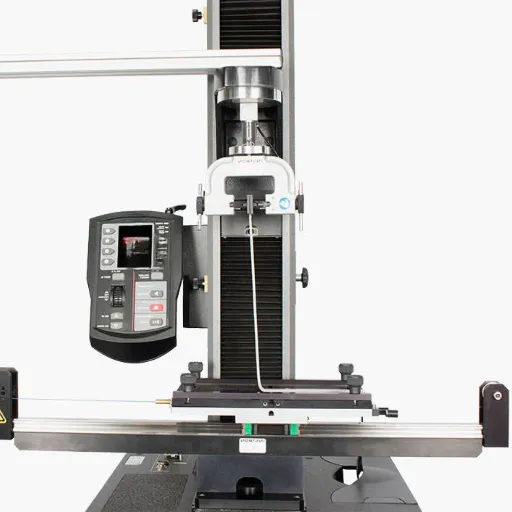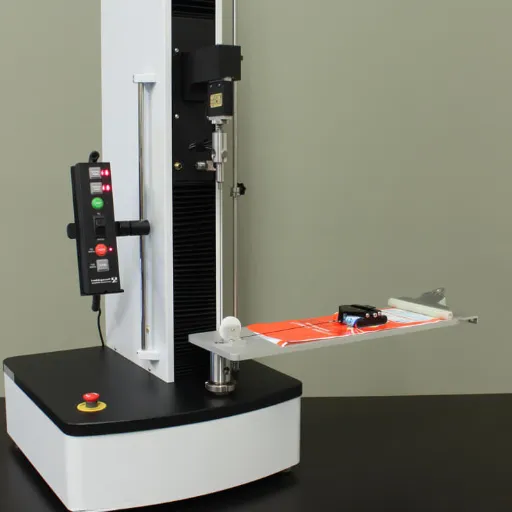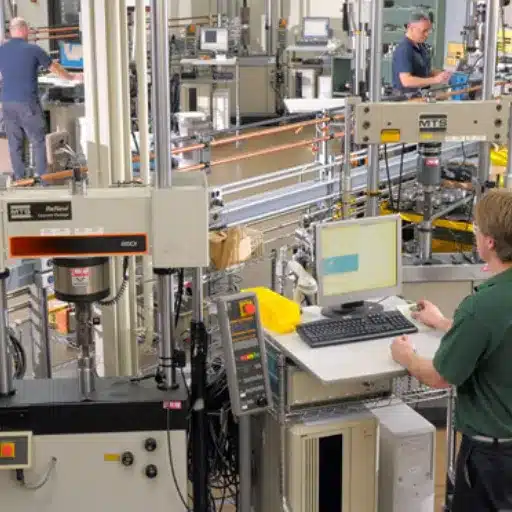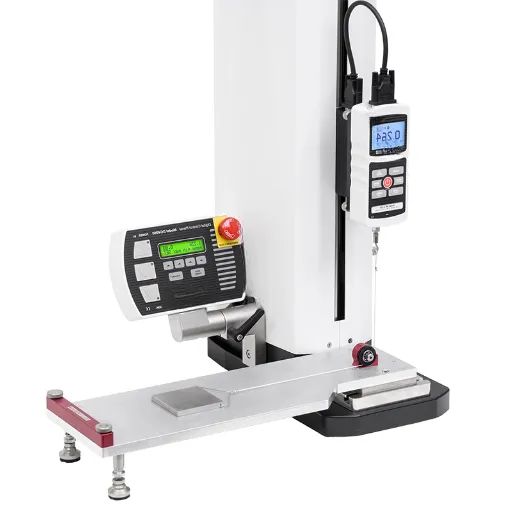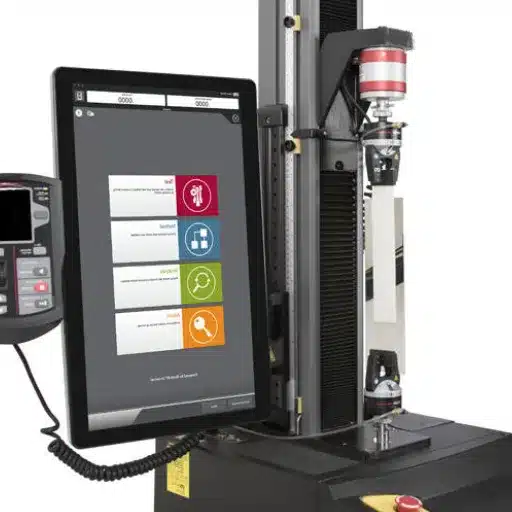In the materials science and engineering sector, shear, and biaxial methods are considered important methods imparting a view into realizing the mechanical behavior of materials under complex stress states. On the contrary, uniaxial testing looks into the stress-strain responses in one particular direction; biaxial testing allows loads to be applied simultaneously along two directions and provides a broader assessment. This kind of analysis is needed by industries and researchers to reproduce real-life situations, understand situations in which materials fail, and improve designs for safety and effectiveness. We will study the varying applications of the biaxial test, the test methods that have made it a highly accurate and reliable tool, and the most modern innovations contributing to its evolution. If you are an engineer of many years standing or an inquisitive researcher, this article is bound to enlighten you on how this regime communicates theory with practice.
Introduction to Biaxial Testing
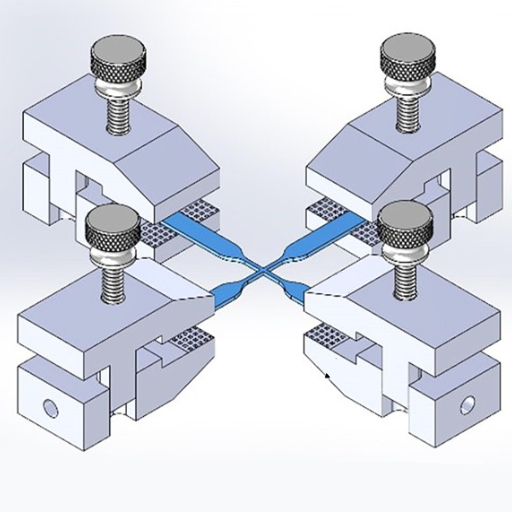
As a testing method, biaxial testing aims to analyze the mechanical properties of a material while subjected to two perpendicular forces acting simultaneously. Its focus is on providing a better representation of complex stress fields than uniaxial testing does, and therefore offers more practical relevance for the applications outside the lab. Biaxial testing processes consider stress, strain, and deformation parameters so the durability of the material may be assessed, failure points predicted, or designs altered for better performance. It is a crucial piece of assembly machinery in aerospace, automotive, and biomedical engineering, which require knowledge about how a material will behave under multi-directional forces.
Definition of Biaxial Test
This kind of testing method is meant to test the response or behavior of a material under stress or strain along two mutually perpendicular axes. Biaxial testing employs forces acting in different directions to simulate complex conditions that materials may face in various applications, including structural components, pressure vessels, or biological tissues; uniaxial testing, in contrast, applies force in only one direction. State-of-the-art advances have integrated digital technologies and advanced analytical software into modern biaxial test machines for more accurate stress-strain measurements and simulation of the actual material performance under conditions of interest, while gaining more insight into the anisotropic and isotropic material properties, all of which are critical to optimum design in industries such as aerospace, automotive, and medical engineering.
Importance of Biaxial Testing in Engineering
The Organizational Structure of Industry Test-Agnostic Machines: Biaxial testing-evaluates the response of materials subjected to multi-directional states of stress, much more similar to real-world conditions. With force applied simultaneously along two axes in tension or compression, biaxial testing evaluates the material response, contrary to uniaxial tests that act on a single axis. Biaxially stressed components form an integral part of aerospace frameworks, automotive assemblies, and medical devices, with test data from these systems being essential to ensure that their performance satisfies safety and reliability requirements.
More advanced modes involved with biaxial testing assist engineers in improving prediction models for material failure, optimizing the utilization of materials, and reducing risks in design. Test results become instruments to validate FEA (finite element analysis) models and designs meet all functions, demanding industrial, and regulatory requirements. Such a data-powered approach is of great importance to designing lightweight composites, bio-compatible materials for prosthetics, and crash-resistant designs of vehicles where multi-axial loading performance is directly proportional to end results.
Overview of Testing Configurations
Testing configurations are made to characterize real world environmental inflictions and observe material behavior under certain scenarios. Testing configurations generally consist of uniaxial, biaxial, and triaxial testing setups depending on the complexity of the loads experienced by the test system. Uniaxial tests measure the response of a material subjected to a single directional force, whereas biaxial and triaxial systems measure the response of a material to multidirectional stress, which is important for advanced engineering applications. The analysts control the test parameters such as stain rate, temperature, and environmental conditions to maintain reproducibility and accuracy. The latest testing setups employed integrated sensors coupled with computational modeling of materials response to better grasp the experimental data for engineers to then use in deciding to increase efficiency or ensure safety and compliance to regulatory bodies.
Testing Methodologies: Planar Biaxial and Biaxial Tensile Tests
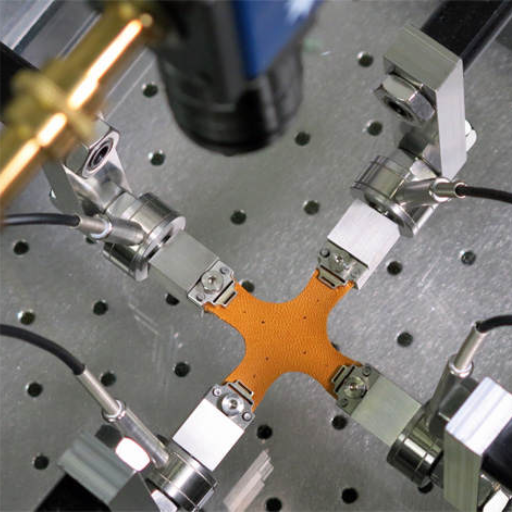
Planar Biaxial Testing
Planar biaxial testing subjects material specimens to simultaneous biaxial tensions under virtually perpendicular loading directions; thereby mimicking multidirectional stress states as seen in real-world applications. The setup usually involves a cruciform specimen upon which tension is applied via actuators or pneumatic systems in a controlled manner. Parameters of interest: load ratio, strain from DIC (Digital image correlation), and boundary condition effects are closely monitored so that a high level of precision can be attained during data acquisition. This testing modality becomes crucial for polymers, composites, and biological tissue materials, in which anisotropy and nonlinear responses often occur.
Biaxial Tensile Testing
Biaxial tensile testing is employed to study responses of materials subjected to simultaneous tensile forces along two axes. It has particular importance in the study of isotropic-anisotropic behavior, especially for sheet metals and thin films. Usually, circular specimens are used, with either equal forces or independently varying forces applied along principal axes. To ensure high accuracy in deformation measurement, strain gauges or optical extensometers are used. Output of biaxial tensile testing serves as input to finite element studies with regards to yield surface, deformation, failure mechanisms, and stress-strain behavior under complex loading states.
Planar Biaxial Test Explained
In simple terms, this test studies the behavior of a material subjected to two perpendicular forces applied simultaneously. As an engineer, I simulate real stress conditions with this method to ensure working data on the material’s performance. Performing tests requires a special apparatus, which includes the cruciform-type or square-shaped specimen and measuring instruments to capture real-time deformation data, which correlate inputs reliably used in simulation via finite element analysis and decisions on fracture strength, ductility, and mode of failure.
Biaxial Tensile Test Procedures
Typically, it starts with preparing the test specimen that is often fabricated into cruciform geometries. This shape allows a controlled central region to undergo biaxial loading while reducing stress concentration at the arms. The specimen is then mounted on a biaxial testing machine whose actuators apply forces along two perpendicular axes. DIC or strain gauges are normally used to obtain surface deformation measures with high precision. After setting up the specimen, the pre-loading checks commence to verify correct alignment and boundary conditions before execution of either proportional or non-proportional loading paths. A detailed data acquisition system records displacement, load, and strain data in real time, which is necessary to analyze the material behavior under biaxial states of stress.
In-Plane Biaxial Testing Techniques
These tests help to characterize materials under multi-axial states of stress to understand their behavior mechanically. Common tests consist of cruciform specimen test, tube specimen test, and planar tension. The cruciform specimen features arms oriented at right angles to one another so as to effect simultaneous loading along two orthogonal axes at a biaxial stress state at the specimen center. Tube specimens are deployed for situations of stressing under internal pressure combined with axial loading, especially suited for thin-walled cylindrical or pipe-like structures. The planar tension apparatus is a test on rectangular specimens loaded along two orthogonal directions, employing special grips and actuators for high precision.
Having a skilled instrumentation capability to capture exact data is a key element of this testing. Digital Image Correlation (also called DIC) techniques are commonly applied to measure full-field strain distribution, and strain gauges or extensometers are employed to measure local strains. Usually, the tests are accompanied by servo-hydraulic or electromechanical test systems that allow independent control of the loads applied in each of the two axes. This level of control is indispensable for reproducing real load conditions in applications such as aerospace, automotive, and civil engineering materials. In short, these three techniques combine detailed specimen design, controlled loading paths, and high-resolution data acquisition systems to offer insights into anisotropic and nonlinear material behavior.
Mechanical Properties Evaluated through Biaxial Testing
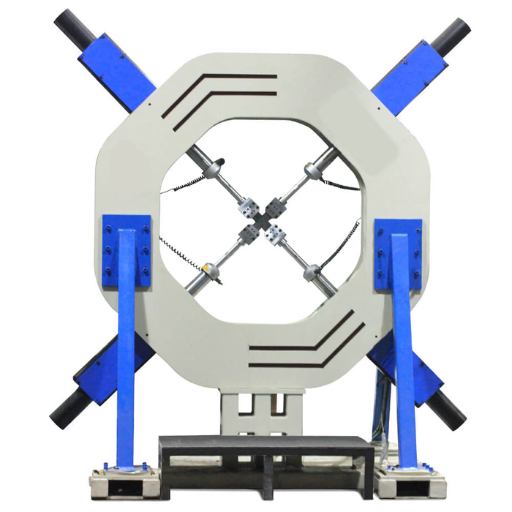
Biaxial testing is one of the ways to assess the main mechanical properties of materials with respect to the opposing loading directions. They are stress-strain relationships, yielding, ultimate tensile strength, and fracture behaviors. It also assists in the investigation of anisotropic behavior and combined stress state conditions so that more accurate material performance models can be developed for real-life applications. Testing is extremely important for materials used in demanding structural environments to qualify their reliability and safety against complex loading conditions.
Understanding Stress and Strain in Biaxial Context
When considering stress and strain in a biaxial context, it involves analyzing the material’s response with loading in two directions perpendicular to each other. According to my research, compounded by information from top resources, the principal stresses and strains occurring simultaneously must be taken into consideration. The analysis usually works with stress-strain tensors or Mohr’s circle to visualize and obtain the magnitude in respect.
Factors such as the elastic modulus, Poisson’s ratio, and specific yield criteria of the material greatly influence the exact prediction of its behavior under conditions of biaxial stress. The mechanism of the forces may sometimes accentuate or reduce some mechanical properties of the material in a biaxial loading as compared to uniaxial stresses. This serves as good justification for carrying out tests on materials subjected to multidirectional forces. With such knowledge, engineering applications can be designed with greater safety and efficiency in complex stress scenarios.
Mechanical Behavior of Materials Under Biaxial Load
Mechanical behavior is contented under biaxial loading because of the interaction of stresses in multiple directions. The material responds to the combined stress state; such response may vary quite a bit from that of a uniaxial stress. Advanced yield criteria, such as Von Mises and Tresca, depending on whether the material is ductile or brittle, are usually used to study this. Moreover, they also use various experimental means such as biaxial tensile testing or finite element analysis to characterize the performance of materials subjected to particular load conditions. These evaluations will thus guarantee the efficient definition of how the material under study deforms, yields, and finally modes, which will enable an engineer to optimize the designs being put under complex stress states.
Interpreting Biaxial Test Results
To interpret biaxial test results accurately, I would want to focus mainly on the stress-strain curves obtained through multi-axial loading conditions to examine how the material appears to deviate from standard uniaxial responses, yield strength, elastic modulus, and failure, among other things. I would also assess the suitability of theoretical formulation of the Von Mises or Tresca criterion to the experimental data by studying qualification of material behavior in complex stress states. Based on these results, I would confirm whether finit element simulations successfully predict the performance under actual condition so that the material is deemed fit for the intended practical engineering use.
Applications of Biaxial Testing Across Industries
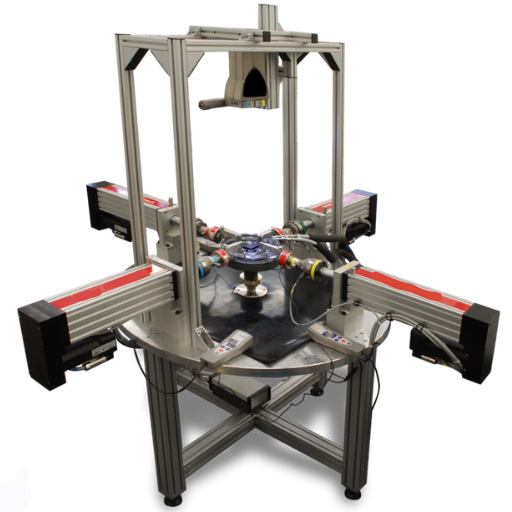
Biaxial testing is critical in a multitude of industries, fostering particular optimizations because it elucidates relevant aspects of material performance under complex states of stress. For instance, its use in aerospace ensures that composite materials used in aircraft truly attain the necessary structural integrity by testing in regard to multidirectional loads. In the same way, biaxial testing scrutinizes the performance of automotive body panels and safety components as they are stressed by combinations of forces during the operation of the vehicle. Biomedical industries also heavily rely on this technique to study the mechanical properties of soft tissues and synthetic implants in order to ensure durability and biocompatibility. Biaxial testing, therefore, allows industrial establishments to predict the behavior of materials with high accuracy along the spectrum from theoretical models to experimental results to finite element analyses and eventually to actual materials in service, ensuring the best possible choice of materials and design reliability.
Use in Material Science and Engineering
A common feature of biaxial testing is its fundamental contribution to material science and engineering; in particular, the analysis of anisotropic behavior of materials under conditions of multi-axial stress. It subjects the material to forces acting along two perpendicular axes, thereby allowing one to ascertain vital information about their mechanical behavior in terms of elasticity, yield strength, and fatigue under such exertions. This becomes very important in instances where materials are subjected to complex stress patterns in service- aerospace, biomedical engineering, and energy sectors.
Biaxial testing plays a critical role in material developments by improving the reliability of material model implementations in finite element analysis (FEA) to accurately simulate structural integrity under real operational environments. This is especially important for composite-type materials, which very often exhibit properties that are direction-dependent. It also fosters further developments in biomedical applications, where it is important for implants and soft tissue biomaterials to be mechanically compatible under physiological loading conditions. Therefore, this approach is fundamental to advancing material performance, reliability, and safety in high-risk industries.
Applications in Soft Tissue Research
Biaxial testing is a necessary tool in the study of soft tissue mechanics, probing the anisotropic and nonlinear behaviors of biological tissues. This testing simulates physiological loading by applying stresses in multiple directions simultaneously, giving quantitative data about tissue properties such as stiffness, elasticity, and deformation applicable to real-life scenarios. Implementation includes cardiovascular tissues like arteries and heart valves, where such testing ensures genuine in vivo dynamics simulation. It is also integral to the development of bioengineered tissues, and for optimizing medical implants to match native tissue mechanics for better performance and long-term outcomes.
Industrial Applications and Case Studies
Biaxial testing finds applications in aerospace, automotive, and civil engineering, driving the innovation of industrial materials, assuring the reliability of performance, and subjecting them to demanding test conditions envisaged under real scenarios. For instance, in aerospace, it investigates the performance and behavior of composite materials under multidirectional loads to qualify their resistance to extreme situations. Likewise, automotive applications perform biaxial tests of tires and skeletal support under a variety of stress conditions aimed at the enhancement of safety and productivity. In civil engineering, this test is applied to geotextiles and membranes which must be rigorously characterized to confirm stability during infrastructure construction.
A particularly interesting case application in the field of biomedical engineering is the use of biaxial testing approaches in the development of prosthetic heart valves. Such investigations provide accurate simulation of mechanical environments imposed upon native valve tissues so that actual materials can be tuned for improved longevity and performance in the patient. Another case emphasizes the use of biaxial testing for the validation of materials for airplane fuselage through studies of stress distribution, which thus ensure that such materials comply with stringent specifications and safety standards. These examples provide the ample demonstration of the utility and ultimate importance of biaxial testing across diversified industries, fostering technological advances and guaranteeing material reliability in real-world scenarios.
Challenges and Innovations in Biaxial Testing
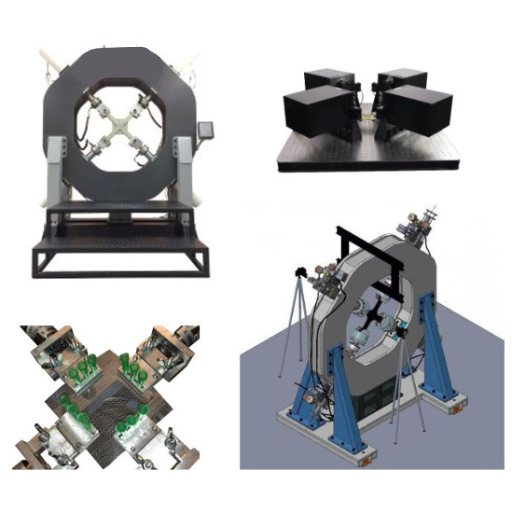
Among the key challenges confronting biaxial testing is the multi-axial loading that must be controlled with pinpoint precision and the stress-strain response that must be accurately evaluated to study reproducibility. Such issues of reproducibility invite problems with nonlinear materials and subjects whose properties might have changed with micro-structural variation and the overall ambient conditions that may include temperature, humidity, and more. Addressing some of the above issues, there is an introduction of systems for accurate strain measurement using advanced digital image correlation techniques, the use of robots for multi-axis dynamic load application, and machine-learning algorithms to predict material performance under complex loading conditions. These developments in turn improve the reliability and applicability of biaxial testing and ultimately foster progress in a variety of industries.
Common Challenges Faced in Biaxial Testing
From one perspective, an important thrust of the challenges in biaxial testing lies in establishing uniform stress and strain fields over the test specimen itself. The genesis of such a problem lies in variation in sample geometry, misalignment of grips, or inconsistencies brought about in the preparation of test materials. Furthermore, simulating the actual loading-to-real-life situations is a much more complex task. It would require control of force and displacement along multiple axes with great precision. Through this, one has yet limited equipment in grip slippage, and having the highest load capacity itself might induce the deformation of the testing apparatus! Lastly, achieving reliable data sets is hindered owing to environmental interference such as temperature fluctuation and ambient relative humidity, which themselves affect the material behavior and influence the actual test outcomes.
Recent Advancements in Testing Equipment
On account of recent advancements in testing equipment, material testing has evolved into a precise and efficient process, thus implicating the very optimization in the forefront. Modern systems, meanwhile, present themselves taller in terms of rigidity inside the load frames, granting consistent results even when used at extreme conditions that have proven earlier detrimental to testing precision. State-of-the-art sensor and data acquisition systems enable real-time observation with the greatest degree of accuracy, even in terms of environmental variables, which might have been a real bother before, given the variability with temperature and humidity. Innovations in software id software that ensures the properties of data processing with the most recent algorithm capable of detailed analysis and minimizing errors are also dawned upon. Collective conversations rank these developments first in the once-limiting testing capabilities in various industries.
Innovative Solutions to Overcome Testing Limitations
Recently, AI and ML have joined cutting-edge technology to further enhance prediction, analysis, and detection of anomalies in innovative solutions intended to combat testing limitations. Testing AI automation allows for rapid repetition of testing while detecting issues with better accuracy and speed. Moreover, experimentation through the cloud offers scalability, provides opportunities to test concurrently on different systems, then positivizes the negation of being dependent on physical infrastructure. Virtualization technologies are another level that promotes advantageous testing by allowing simulations of multiple forms of real-life conditions to confirm verification. These innovations are put forward to lower inconsistencies and promote accuracy and enhanced testing performances.
Reference Sources
-
TestResources: Biaxial Test – This source provides an overview of biaxial testing, its applications, and its importance in industries like aerospace.
-
ScienceDirect: Biaxial Test Overview – A detailed explanation of biaxial tests, focusing on their scientific methodologies and material properties.
-
Number Analytics: Mastering Biaxial Loading in Mechanics – A guide to understanding biaxial loading and its role in designing and analyzing structures under complex conditions.
-
ZwickRoell: Biaxial Test – Insights into biaxial tensile testing, particularly in research and development contexts.
-
Instron: Biaxial Testing of Medical Devices – Focuses on biaxial testing systems and their applications in testing mechanical properties of medical devices.
Frequently Asked Questions (FAQs)
Q:What is a biaxial test?
A:A biaxial test is a method that evaluates the mechanical properties of materials under two-dimensional stress conditions. Such a test is essential when considering the behavior of materials subject to forces acting simultaneously with respect to two or more directions since it gives basic information for engineering and material applications.
Q:Why is the biaxial test important?
A:Biaxial testing is crucial because real-world applications usually subject materials to some biaxial stress, like during manufacturing or while in service as a structural component. Knowing how a material behaves under biaxial loading allows an engineer to better predict how the material will perform, how long it will last, and how it will fail during use in desig- applications, ranging from aerospace and automotive to civil engineering.
Q:How is biaxial testing performed?
A:Usually, biaxial testing is performed using specialized equipment that applies loads in two perpendicular directions that are controlled. The material specimen is shaped as required for the test, e.g., as thin sheets or circular discs; it is subjected to tensile or compressive forces while monitoring its response: strain, stress distribution, etc.
Q:What materials can be examined with biaxial testing?
A:Biaxial testing is possible for many materials, including metals, polymers, ceramics, and composites. However, each of these material classes may require certain testing conditions and setups to truly represent their respective mechanical properties and failure modes under biaxial loading.
Q:What are some applications of biaxial testing?
A:Biaxial testing is applied in many industries: aerospace to test composite materials, automotive to study sheet metal forming, and biomedical to evaluate implants’ mechanical properties; it also has applications in materials research for developing and improving materials.
Q:What important parameters are measured in a biaxial test?
A:In biaxial testing, important parameters are measured: stress and strain, yield strength, ultimate tensile strength, and failure modes. These parameters describe in detail the behavior of the material when subjected to complex loading configurations and assist in selecting materials and designing systems.
Q:How does a biaxial test differ from a uniaxial test?
A:The major difference between biaxial testing and uniaxial testing arises in biaxial testing, the applied load acts in two directions, while in uniaxial testing, the load is applied in one direction. This results in an insufficient realization of real-life scenarios in uniaxial testing. In contrast, biaxial testing endeavors to present an insight into the very real application of actual loading.
Q:What are the challenges in performing biaxial testing?
A:Challenges arise in periods for biaxial testing while using special apparatuses, measuring accurately stresses and strains in several directions, and the situation of load that can be non-uniform. Moreover, analyzing the results can lead to thinking in a more complex way than one has to use in uniaxial tests.

